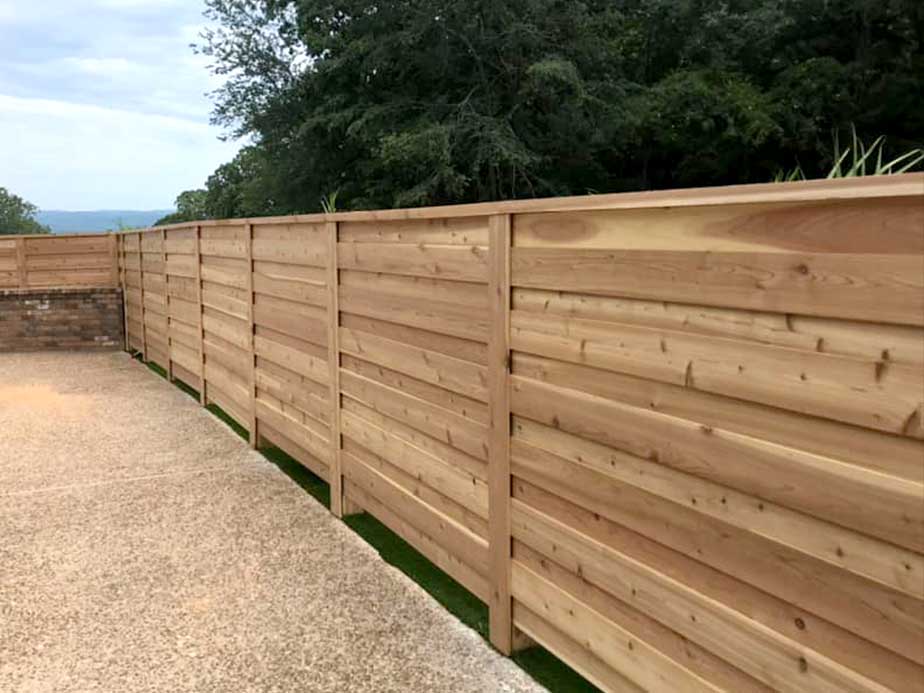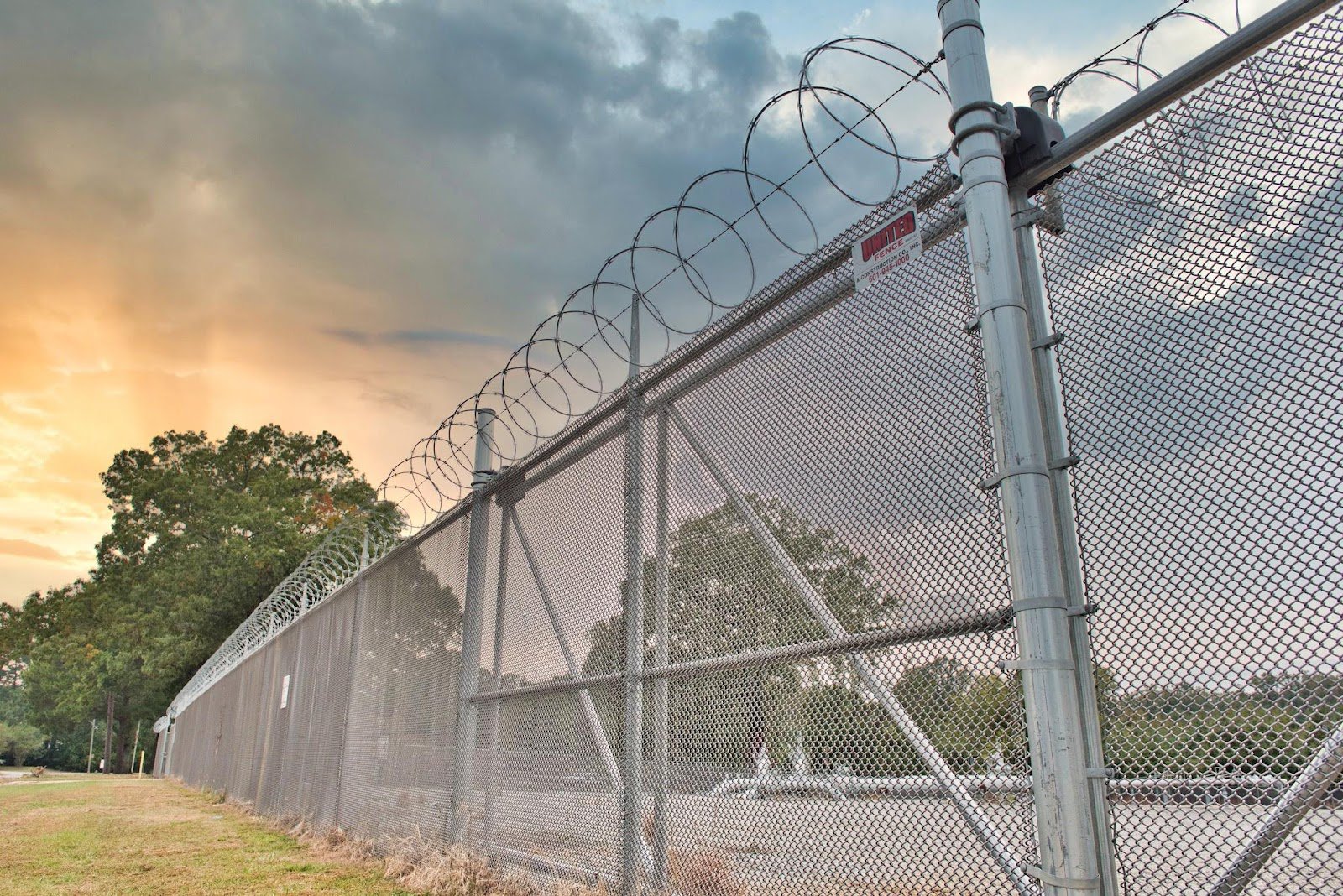All Categories
Featured
Your fencing is an investment that offers personal privacy, safety and security, and visual appeal. Each secure fencing kind has special upkeep requires based on its product's sturdiness, exposure to the aspects, and various other factors.
![]()
Climate Protection: Apply a top quality sealer or stain every 2-- 3 years to protect the timber from wetness and UV rays. For extreme climates, annual reapplication might be necessary. Cleansing: Make use of a yard tube or a stress washer on a low setup to eliminate dust and mildew. Adhere to up with a moderate detergent for persistent discolorations. Fixings: Inspect for loosened or deteriorating boards and replace them promptly. Tighten screws or nails to keep the structure stable. Pest Control: Usage termite-resistant wood or deal with the fencing with insect repellents to avoid problems. 2. Vinyl Fencings. Vinyl fences are popular for their toughness and minimal maintenance needs.
Cleaning: Laundry the surface with a yard hose pipe or a mixture of soap and water to remove dirt and algae. For difficult stains, use a soft-bristle brush or a vinyl-specific cleaner. Assessments: On a regular basis inspect for splits or warping, specifically after solid winds or hefty effects. Repair services: Replace any kind of broken areas quickly. Plastic fences commonly make use of modular components, making repair work straightforward. 3. Chain-Link Fences. Chain-link fences are cost-effective and tough however call for routine focus to stop corrosion.
Rust Removal: Make use of a cord brush to remove rust from exposed areas, then use a rust-inhibiting spray to protect the metal. Cleaning: Hose down the fencing on a regular basis to get rid of dirt. For gunk, use soapy water and a stiff-bristle brush. Fixings: Tighten any kind of drooping areas or replace harmed web links to preserve protection. 4. Wrought Iron Fences. Wrought iron fences use sturdiness and elegance however are prone to corrosion if not correctly maintained.
![]()
Corrosion Avoidance: Remove corrosion places with sandpaper and apply a rust-resistant guide followed by outdoor metal paint. Examine for corrosion at least twice a year. Cleaning: Wipe down with a towel and soapy water to preserve the coating. Prevent abrasive cleaners that can damage the surface area. Painting: Paint every couple of years to safeguard the steel from rust and maintain it looking fresh. 5. Aluminum Fences. Aluminum fencings are light-weight, sturdy, and immune to corrosion, calling for much less maintenance contrasted to functioned iron.
Cleaning: Tidy with soap and water to remove dust and dirt. Wash extensively to stop residue. Assessments: Check for loosened hardware or dents, specifically after tornados. Protect or change parts as required. Touch-Ups: Apply paint to scraped or cracked areas to stop damage to the safety layer. 6. Compound Fences. Composite fences are made from a mix of timber and plastic, combining toughness with minimal upkeep.
![]()
Cleansing: Make use of a hose pipe or a soft brush with soap and water to clean the surface area. Avoid utilizing extreme chemicals. Examinations: Look for bending, particularly in severe warmth. Tighten up or replace any broken panels. Form Prevention: While composite products withstand rot, maintain the fence dry and tidy to avoid mold and mildew accumulation. 7. Bamboo Fences. Bamboo is an environmentally friendly choice however needs mindful upkeep to keep its look and durability.
Securing: Apply a safety sealer or varnish every 2-- 3 years to safeguard against moisture and UV damage. Cleansing: Tidy with mild soap and a soft sponge or brush. Prevent high-pressure washing, which can damage bamboo fibers. Fixings: Change harmed sections or posts to maintain architectural integrity and appearance. General Upkeep Tips for All Fence Types. Regular Assessments: Check your fence a minimum of when every period for damage, wear, or loosened components. Cutting Vegetation: Keep vines, bushes, and plants away from the fencing to protect against dampness damage and decrease bug activity. Seasonal Changes: In areas with snow, avoid stacking snow against your fencing to protect against structural anxiety. In hot climates, evaluate for heat-related bending or fading. Conclusion. Each fence material has its distinct upkeep needs, yet a positive technique to care can expand its life expectancy and keep it looking its finest. Wood fencings require more attention compared to plastic or aluminum, yet each product take advantage of normal cleaning, examinations, and timely repair services. By customizing your upkeep methods to the sort of fence you have, you'll make sure that it proceeds to supply personal privacy, security, and visual allure for years ahead.

- Wood Fences. Wood fencings are valued for their natural look yet call for constant upkeep to avoid damages.
Climate Protection: Apply a top quality sealer or stain every 2-- 3 years to protect the timber from wetness and UV rays. For extreme climates, annual reapplication might be necessary. Cleansing: Make use of a yard tube or a stress washer on a low setup to eliminate dust and mildew. Adhere to up with a moderate detergent for persistent discolorations. Fixings: Inspect for loosened or deteriorating boards and replace them promptly. Tighten screws or nails to keep the structure stable. Pest Control: Usage termite-resistant wood or deal with the fencing with insect repellents to avoid problems. 2. Vinyl Fencings. Vinyl fences are popular for their toughness and minimal maintenance needs.
Cleaning: Laundry the surface with a yard hose pipe or a mixture of soap and water to remove dirt and algae. For difficult stains, use a soft-bristle brush or a vinyl-specific cleaner. Assessments: On a regular basis inspect for splits or warping, specifically after solid winds or hefty effects. Repair services: Replace any kind of broken areas quickly. Plastic fences commonly make use of modular components, making repair work straightforward. 3. Chain-Link Fences. Chain-link fences are cost-effective and tough however call for routine focus to stop corrosion.
Rust Removal: Make use of a cord brush to remove rust from exposed areas, then use a rust-inhibiting spray to protect the metal. Cleaning: Hose down the fencing on a regular basis to get rid of dirt. For gunk, use soapy water and a stiff-bristle brush. Fixings: Tighten any kind of drooping areas or replace harmed web links to preserve protection. 4. Wrought Iron Fences. Wrought iron fences use sturdiness and elegance however are prone to corrosion if not correctly maintained.

Corrosion Avoidance: Remove corrosion places with sandpaper and apply a rust-resistant guide followed by outdoor metal paint. Examine for corrosion at least twice a year. Cleaning: Wipe down with a towel and soapy water to preserve the coating. Prevent abrasive cleaners that can damage the surface area. Painting: Paint every couple of years to safeguard the steel from rust and maintain it looking fresh. 5. Aluminum Fences. Aluminum fencings are light-weight, sturdy, and immune to corrosion, calling for much less maintenance contrasted to functioned iron.
Cleaning: Tidy with soap and water to remove dust and dirt. Wash extensively to stop residue. Assessments: Check for loosened hardware or dents, specifically after tornados. Protect or change parts as required. Touch-Ups: Apply paint to scraped or cracked areas to stop damage to the safety layer. 6. Compound Fences. Composite fences are made from a mix of timber and plastic, combining toughness with minimal upkeep.

Cleansing: Make use of a hose pipe or a soft brush with soap and water to clean the surface area. Avoid utilizing extreme chemicals. Examinations: Look for bending, particularly in severe warmth. Tighten up or replace any broken panels. Form Prevention: While composite products withstand rot, maintain the fence dry and tidy to avoid mold and mildew accumulation. 7. Bamboo Fences. Bamboo is an environmentally friendly choice however needs mindful upkeep to keep its look and durability.
Securing: Apply a safety sealer or varnish every 2-- 3 years to safeguard against moisture and UV damage. Cleansing: Tidy with mild soap and a soft sponge or brush. Prevent high-pressure washing, which can damage bamboo fibers. Fixings: Change harmed sections or posts to maintain architectural integrity and appearance. General Upkeep Tips for All Fence Types. Regular Assessments: Check your fence a minimum of when every period for damage, wear, or loosened components. Cutting Vegetation: Keep vines, bushes, and plants away from the fencing to protect against dampness damage and decrease bug activity. Seasonal Changes: In areas with snow, avoid stacking snow against your fencing to protect against structural anxiety. In hot climates, evaluate for heat-related bending or fading. Conclusion. Each fence material has its distinct upkeep needs, yet a positive technique to care can expand its life expectancy and keep it looking its finest. Wood fencings require more attention compared to plastic or aluminum, yet each product take advantage of normal cleaning, examinations, and timely repair services. By customizing your upkeep methods to the sort of fence you have, you'll make sure that it proceeds to supply personal privacy, security, and visual allure for years ahead.
Latest Posts
Uncover the Best Auto Repair Deals in Montclare, Chicago
Published May 27, 25
1 min read
How to Know When Your Car Needs Skilled Auto Repair at Montclare Auto Repair
Published May 27, 25
1 min read
The Benefits of Regular Car Maintenance at Montclare Auto Repair Reduces Costs
Published May 22, 25
1 min read
More
Latest Posts
Uncover the Best Auto Repair Deals in Montclare, Chicago
Published May 27, 25
1 min read
How to Know When Your Car Needs Skilled Auto Repair at Montclare Auto Repair
Published May 27, 25
1 min read
The Benefits of Regular Car Maintenance at Montclare Auto Repair Reduces Costs
Published May 22, 25
1 min read